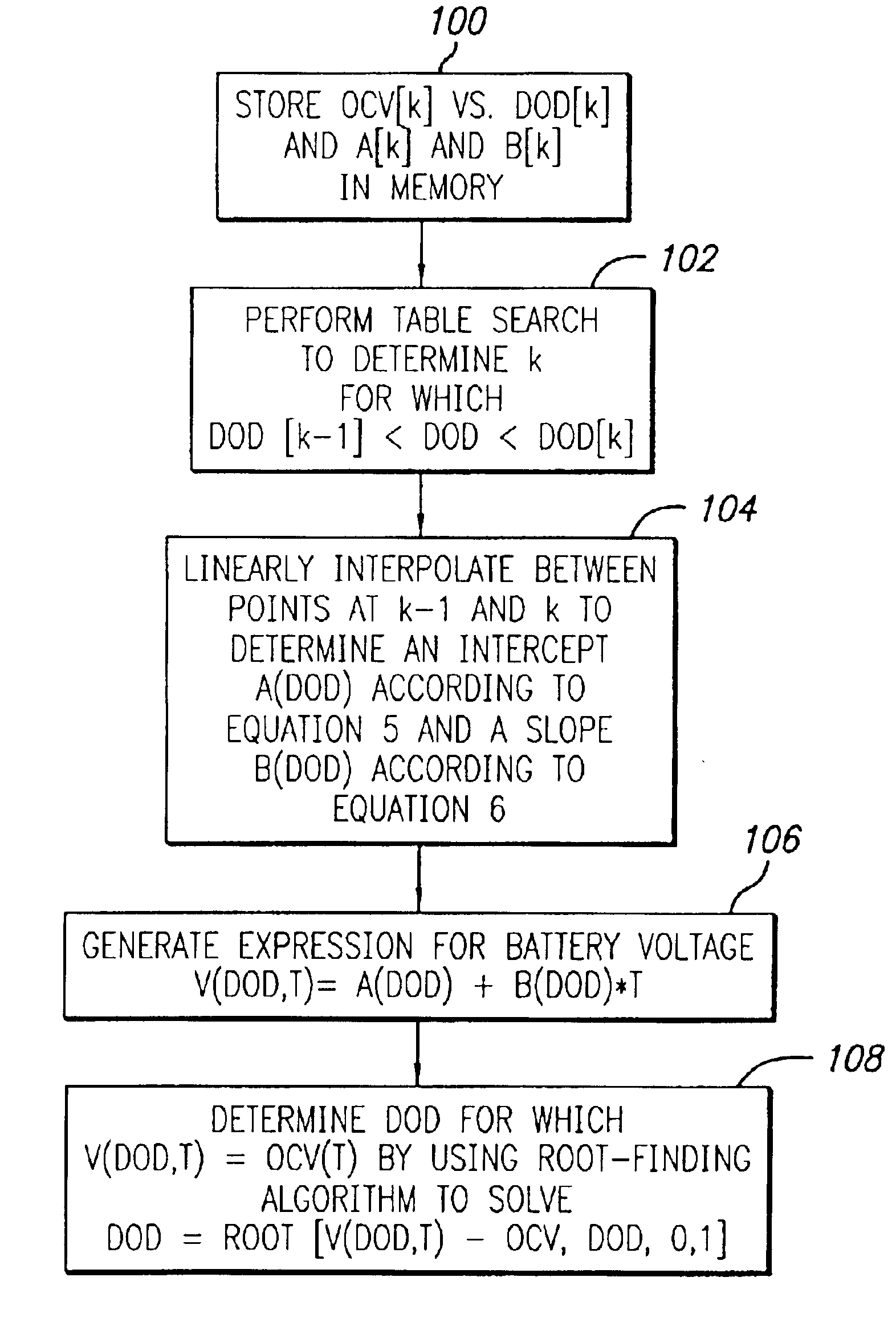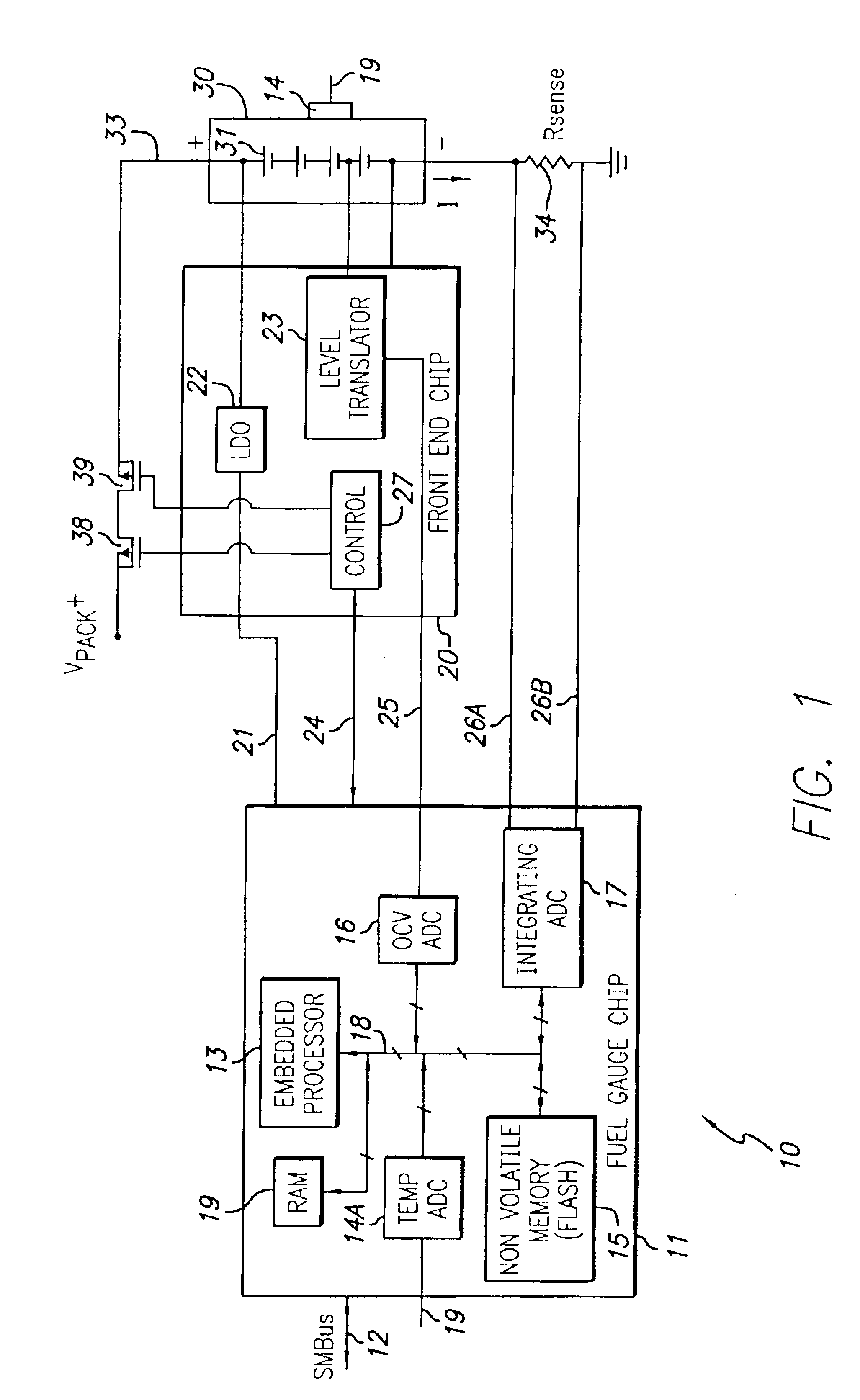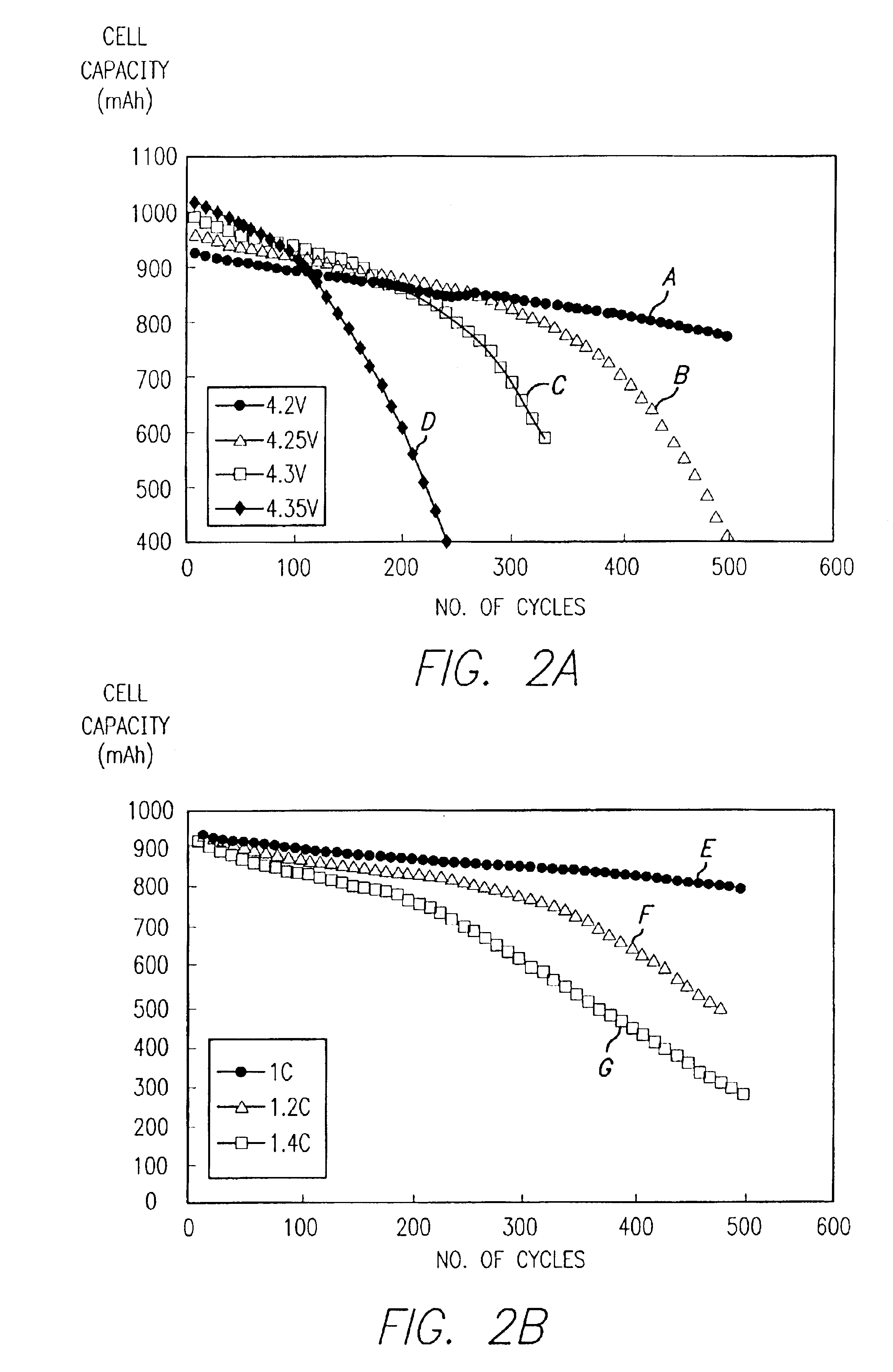Circuit and method for measurement of battery capacity fade
a technology applied in the field of circuit and measurement method for measuring battery capacity fade, can solve the problems of long periods of relative inactivity, inconvenient use, and the inability of most battery operated systems such as personal digital assistants (pdas), to provide continuous heavy load on the battery, and achieve accurate indication of remaining run-tim
- Summary
- Abstract
- Description
- Claims
- Application Information
AI Technical Summary
Benefits of technology
Problems solved by technology
Method used
Image
Examples
Embodiment Construction
[0031]Referring to FIG. 1, a “battery fuel gauge system”10 includes a “battery fuel gauge” integrated circuit chip 11 that includes an embedded processor 13 coupled by a bidirectional digital bus 18 to a temperature sensor circuit 14, a nonvolatile memory 15, a random access memory (RAM) 19, an analog-to-digital converter (ADC) 16, and an integrating analog-to-digital converter 17. The temperature sensor circuit 14 is coupled to an external sensor 19 which is directly attached to the battery 30 shown in FIG. 1. Nonvolatile memory 15 could be a conventional flash memory, ADC 16 and ADC 17 both can be conventional analog-to-digital converters, and embedded processor 13 can, for example, be a commercially available 8 MHz processor having an 8-bit central processing unit (CPU) and a RISC architecture. Various suitable embedded processors that are commercially available can be utilized. For example, the Assignee's MSP430 microprocessor is capable of performing the necessary computations,...
PUM
 Login to View More
Login to View More Abstract
Description
Claims
Application Information
 Login to View More
Login to View More - R&D
- Intellectual Property
- Life Sciences
- Materials
- Tech Scout
- Unparalleled Data Quality
- Higher Quality Content
- 60% Fewer Hallucinations
Browse by: Latest US Patents, China's latest patents, Technical Efficacy Thesaurus, Application Domain, Technology Topic, Popular Technical Reports.
© 2025 PatSnap. All rights reserved.Legal|Privacy policy|Modern Slavery Act Transparency Statement|Sitemap|About US| Contact US: help@patsnap.com



